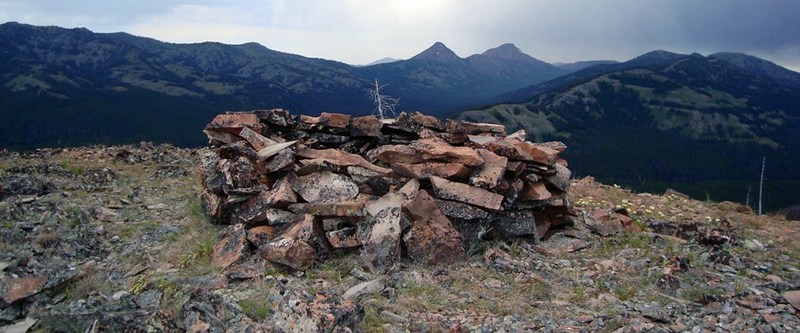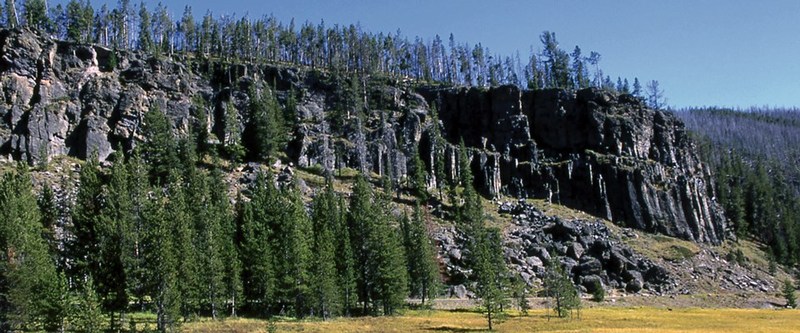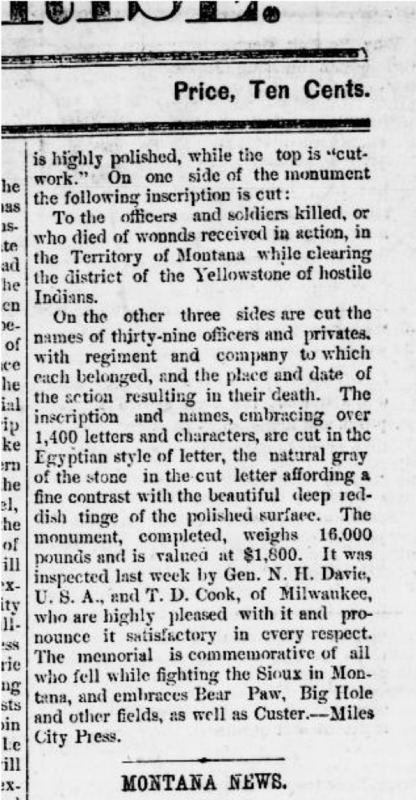Indian Removal from Yellowstone National Park

When Yellowstone was created as America’s first National Park, Indian presence was seen as a threat to tourism and to government officials in the area. Yellowstone saw little of the ensuing battles between American Indians and federal troops, but the area remained an important source of tension as Indian land claims were disputed and reconsidered.
For centuries, American Indians used natural resources available in what now constitutes Yellowstone National Park as part their seasonal migration cycles. One band of Shoshone, the Tukudika or Sheep Eaters, lived in the higher elevations of Yellowstone and were considered the park’s only year-round residents. Other groups, including the Crow, Blackfeet, Bannock, Nez Perce, and Shoshone used the region seasonally for hunting, gathering food, and trading. The mountains of Yellowstone were popular vision quest sites, and the geysers and hot springs were believed to house spirits. The area was also a source of important mineral deposits, including obsidian which was used to make weapons and tools.
In the Fort Laramie treaties of 1851 and 1868, the government had agreed that land in the Yellowstone area belonged to multiple Native groups. However, as the area grew in popularity among miners and travelers alike, Natives found their access to resources in the park increasingly restricted. At negotiations for the second Fort Laramie Treaty, Crow leader Black Foot said, “My grandfathers advised the nation of the Crow to be good. How can we be good when you take our lands, promising in return so many things which you never give us?”
In 1872, President Ulysses S. Grant signed the Act of Dedication, creating Yellowstone as the country’s first national park. The act was meant to protect the area’s resources from miners and lumber companies, as well as from ‘lawless’ rural whites and Indians.
The Tukudika remained in the park for seven years after its creation; they weren’t part of reservation negotiations and saw nearby reservations as a convenience. Largely believed to have been wiped out by smallpox or other Indians, most of them likely joined the Eastern Shoshone at Wind River in 1879.
Under Superintendent Norris in the 1870s and 80s, park officials heavily discouraged Indian presence in the park, believing it a deterrent to tourist traffic. Park officials downplayed the historical roles of Indian groups in the area and spread rumors that Indians were afraid of the park’s geysers. Yellow Wolf, a Nez Perce participant in the Nez Perce war, recalled instead that “the hot springs and high-shooting water were nothing new to [them].” In 1886 the US Army assumed control of the park and would use violence to deter Indians from returning.
1896 Supreme Court case Ward v. Race Horse decided that the legislation that had established Yellowstone as a national park was the legal foundation for efforts to keep Indians off public land. However, they continued to use the park, avoiding rangers as they gathered food or important minerals in areas unused by tourists. During the twentieth century, park officials sometimes used surrounding Indian groups, the Crow especially, for ceremonial purposes to increase tourism. Today, members of ‘affiliate tribes’ can enter the park for traditional purposes without paying the entrance fee, though their activities are severely restricted.
Images



